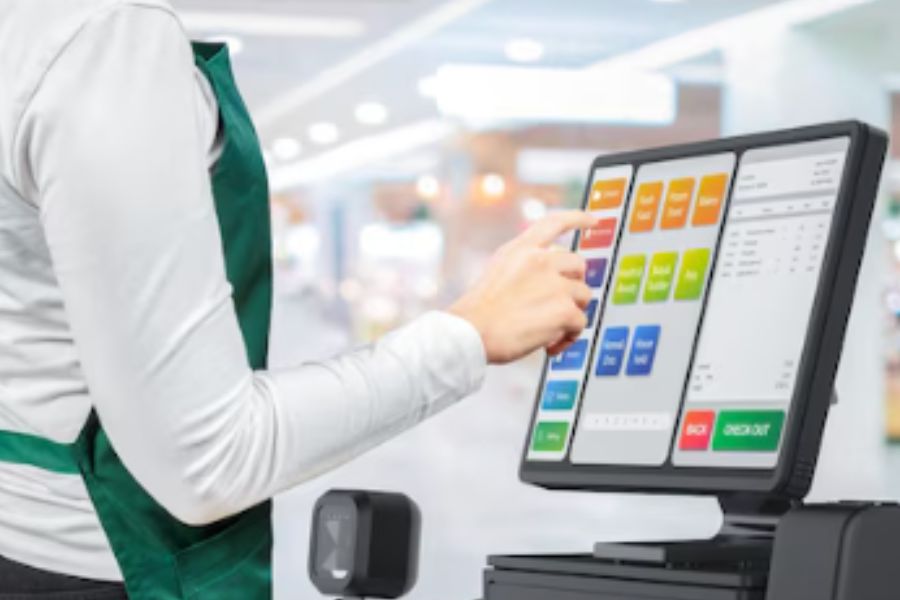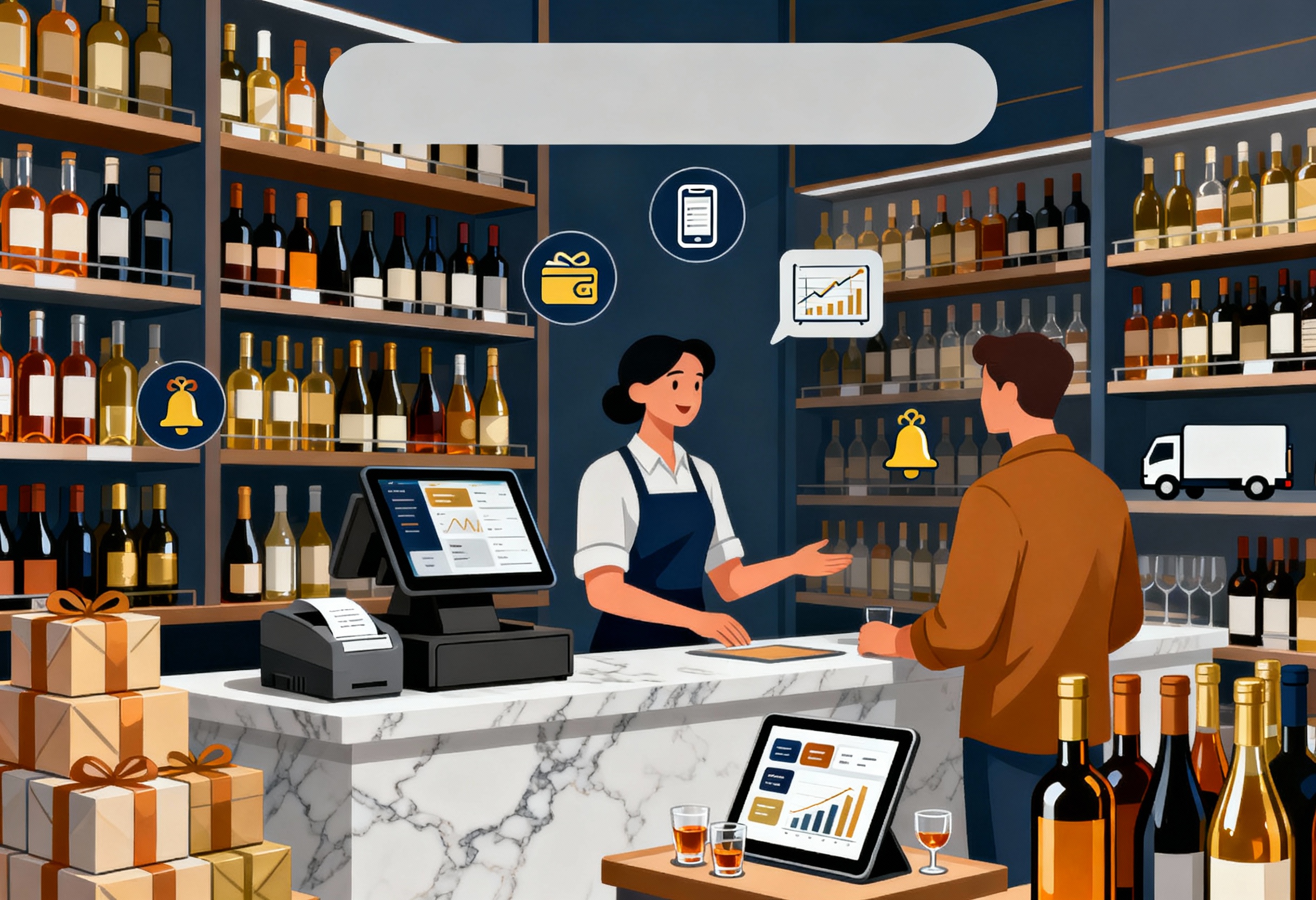Retailers expanding without a multi store POS system can lose up to 30% in potential revenue due to inventory mistakes, poor coordination, and inconsistent customer experiences. Disconnected systems across multiple locations lead to inefficiencies, duplicated efforts, and missed sales opportunities. This article will discuss what it really means to overlook a multi store point of sale system during retail expansion, revealing how hidden operational and financial costs can quietly undermine growth.
Highlight
- Expanding without a multi store POS system leads to weak planning, inconsistent operations, and poor market execution that limit long-term growth.
- Relying on disconnected systems drives up operational costs, increases inventory errors, weakens data security, and results in lost revenue.
Overview of Multi Store Point of Sale
A multi store point of sale (POS) system is a centralized retail management solution designed to support businesses with multiple locations. Unlike traditional POS systems that operate independently in each store, a multi store POS connects all branches under a single platform, allowing for real-time data sharing, unified inventory control, consolidated sales reporting, and optimized customer management.
This system enables retailers to track stock across locations, analyze overall performance, and implement consistent pricing and promotions. It also simplifies operations by cutting manual processes and ensuring smooth communication between stores and headquarters.
Ideal for growing retail chains, a multi store point of sale system boosts efficiency, supports scalability, and strengthens the customer experience by providing accurate information and personalized service across every touchpoint.
Why Retail Expansion Requires More Than Just Ambition
Expanding a retail business involves more than increasing store count. It requires consistent customer service, accurate stock control, and synchronized operations across every location. Without a multi-store POS system, businesses quickly run into issues like missing data, mismatched pricing, and stock discrepancies. These problems slow down growth, increase costs, and damage the customer experience. To expand successfully, retailers need a system that connects all locations and provides complete visibility across the business.
Strategic Planning Is Essential
Retailers often underestimate how much planning is needed when entering new markets. Relying on assumptions, rather than data, increases the risk of poor store performance, supply chain breakdowns, and mismatched product offerings. Retailers must assess:
- Which markets have actual demand for their products
Sales data from other locations and customer trends help evaluate potential markets before committing resources.
- How the competition operates locally
Understanding local pricing, product mix, and customer expectations makes it easier to position the store effectively.
- Regulatory and compliance obligations in the target region
Every region may have its own requirements for tax handling, invoicing, or payment security, which need to be met from day one.
Relying on ambition rather than data leads to poor market selection, unsustainable logistics, and missed customer expectations. Retailers need tools that give them market insights, operational control, and adaptability, which a multi-store POS system can support effectively.
►►► Optimal solution set for businesses: Multi store POS, Next-gen POS, Inventory Management Software (MSI), Self Service, Automation, Backorders
Operational Infrastructure Must Be Scalable
Managing multiple stores with separate systems often leads to breakdowns that affect sales, service, and internal operations. As store count increases, so does the complexity of managing stock, pricing, promotions, and staff. Without a system that connects all locations, retailers face:
- Fragmented inventory data
Inventory records differ across locations, making it difficult to track stock levels or transfer products between stores efficiently.
- Inconsistent customer experiences
Prices, promotions, or loyalty programs may not be applied the same way across all stores, frustrating customers.
- Increased human errors and delays
Manual data entry and reconciliation eat up staff time and increase the risk of mistakes in orders, reporting, and inventory updates.
A scalable infrastructure, like a multi-store POS system, provides the visibility and control needed to keep all outlets aligned with the brand’s standards.
Cultural and Local Adaptability Are Non-Negotiable
Retailers expanding into new markets must adjust to local buyer habits, regulations, and logistics needs. What works in one region may not work in another. Failing to adapt leads to low engagement, compliance problems, and weak sales.
A multi-store POS system allows each store to configure settings that reflect its local environment, while still staying connected to the main system. It can be set up to:
- Support local currencies, taxes, and payment methods
Each store can process payments correctly and meet local tax reporting requirements without relying on external tools.
- Run in different languages or display local terms
This improves communication with staff and customers, especially in multilingual or international markets.
- Segment promotions or pricing by region
Retailers can create store-specific offers based on regional demand, holidays, or seasonal trends, without affecting other stores.
With these capabilities in place, retailers can enter new markets with confidence. The multi store POS system provides the flexibility to adapt to local needs while keeping control centralized. It allows the business to grow without creating separate workflows or duplicating systems for each location.
Hidden costs tied to not using Multi Store POS System in Retail Expansion
Numerous business owners, particularly those running small and medium-sized enterprises are often reluctant to invest in a multi store POS system. Their hesitation usually stems from tight budgets or the perception that manual record-keeping or traditional cash registers are adequate. However, this mindset can be misleading.
In reality, foregoing a multi store point of sale system can end up costing far more over time.
Rising Operational Expenses
When retailers manage each store with separate POS systems, they face inflated operational expenses. Each location may:
- Purchase individual software licenses
- Hire local IT support teams
- Duplicate data entry and reconciliation efforts
These costs accumulate quickly, especially as store count increases. A multi store point of sale system eliminates these redundancies by consolidating operations into a single platform. It manages transactions, inventory, and employee activity across all branches, reducing unnecessary overhead and freeing up internal resources.
Decline in Efficiency and Output
Without a connected system, staff often have to:
- Call other stores to check stock levels
- Manually input data into spreadsheets
- Handle customer inquiries without unified customer history
These tasks slow down service, reduce productivity, and increase frustration across teams. A disconnected setup also leads to miscommunication between stores and departments. A multi store POS system gives every team access to real-time data, improves coordination, and helps staff work more efficiently with fewer delays.
Unreliable Inventory Tracking
Inaccurate inventory is one of the most damaging blind spots for growing retailers. Without a unified system:
- Overstock and understock situations occur frequently
- Stores may sell unavailable items
- Stock transfers become chaotic and error-prone
Customers today expect smooth shopping experiences. If one store is out of stock, they expect another nearby to fulfill their needs. Real-time inventory syncing across all stores, a feature built into multi-store POS systems, solves this challenge. It ensures visibility, reduces losses, and improves customer satisfaction.
Weak Data Protection Measures
Security risks are elevated when multiple systems operate independently. Each POS terminal may store sensitive data locally, making it a prime target for breaches. Issues include:
- Lack of encryption
- Unsecured networks
- Outdated software versions
A multi store POS system reduces these risks by using cloud infrastructure, role-based access, encrypted transactions, and automatic backups. With strict data privacy regulations (such as GDPR and CCPA), handling customer data securely is non-negotiable. A single breach can damage the brand, trigger penalties, and erode customer trust.
Elevated System Upkeep Costs
Maintaining individual systems across multiple locations is a logistical nightmare. Retailers have to:
- Schedule updates for each store’s POS
- Troubleshoot issues separately
- Train employees on different software interfaces
This decentralized approach drives up IT costs and consumes valuable internal resources. Cloud-based multi-store POS systems offer automatic updates and centralized troubleshooting, ensuring minimal downtime and a consistent user experience across all locations.
Negative Financial Consequences
All of these inefficiencies compound into one significant problem: lost revenue. Retailers without a multi-store POS system face:
- Poor visibility into which stores are underperforming
- Inaccurate financial forecasting
- Delayed decision-making
When financial data isn’t unified, business leaders operate in the dark. This leads to misinformed strategies, wasted budgets, and lost opportunities. Conversely, a multi-store POS provides real-time analytics, enabling more intelligent decisions that drive growth and profitability.
ConnectPOS-A Tailored Solution for Expanding Retail Chains
ConnectPOS is a powerful, scalable solution specifically designed to help retail chains grow efficiently. It is built to support multi-location businesses, offering a robust feature set:
- Centralized Control and Real-Time Synchronization
One of ConnectPOS’s standout features is its centralized dashboard, which provides real-time updates across all sales channels and store locations. Whether it’s stock levels, sales data, or customer transactions, retailers have immediate access to accurate, up-to-date information. This ensures better inventory control, data-driven decision-making, and quick issue resolution.
- Tailored for Scalability and Flexibility
ConnectPOS supports businesses at every stage of expansion. From setting up new outlets to integrating with popular platforms like Magento POS, Shopify POS, BigCommerce POS, and WooCommerce POS, the system is designed to scale as you grow. Its flexibility allows businesses to customize settings based on regional tax laws, currencies, languages, and customer behaviors for global expansion.
- Omnichannel Experience and Mobile Capabilities
Modern customers expect a unified experience whether they shop in-store or online. ConnectPOS enables real-time omnichannel syncing, making it easy to implement click-and-collect, ship-from-store, or cross-channel loyalty programs.
Additionally, its mobile POS feature empowers staff to engage with customers on the sales floor, reducing wait times and increasing satisfaction.
- Reliable Support and Data Security
ConnectPOS provides 24/7 customer support and robust data security protocols, ensuring business continuity and protection from cyber threats.
For retail brands planning expansion or already managing multiple outlets, ConnectPOS offers the precision, power, and peace of mind necessary to thrive in today’s dynamic market.
FAQs: Multi store Point of Sale
- How can a multi-store POS help reduce operational costs?
A multi-store POS centralizes operations, reducing the need for redundant systems, manual data entry, and local IT support. It streamlines processes across all stores, cutting down on software licensing, training, and maintenance expenses.
- Is a multi-store POS system suitable for small retail chains?
Yes. Even small chains with two or three stores benefit from the standardization, control, and data visibility offered by a multi-store POS. It prepares businesses for future growth without requiring a complete systems overhaul later.
- Can a multi-store POS improve employee performance?
Absolutely. By simplifying workflows, offering better tools, and reducing manual tasks, employees can focus more on customer service and sales. Real-time data access also helps staff make faster, smarter decisions.
Conclusion
In sum, failing to adopt a multi store point of system leads to mounting inefficiencies, inflated costs, and missed growth opportunities. As retail becomes more data-driven and interconnected, the gap between tech-enabled retailers and those resisting change will only widen.
ConnectPOS provides a future-ready solution for retailers serious about expansion. Reach out to us for a comprehensive toolset that supports operations, simplifies scaling, and drives profitability across all locations.
►►► Optimal solution set for businesses: Shopify POS, Magento POS, BigCommerce POS, WooCommerce POS, NetSuite POS, E-Commerce POS



